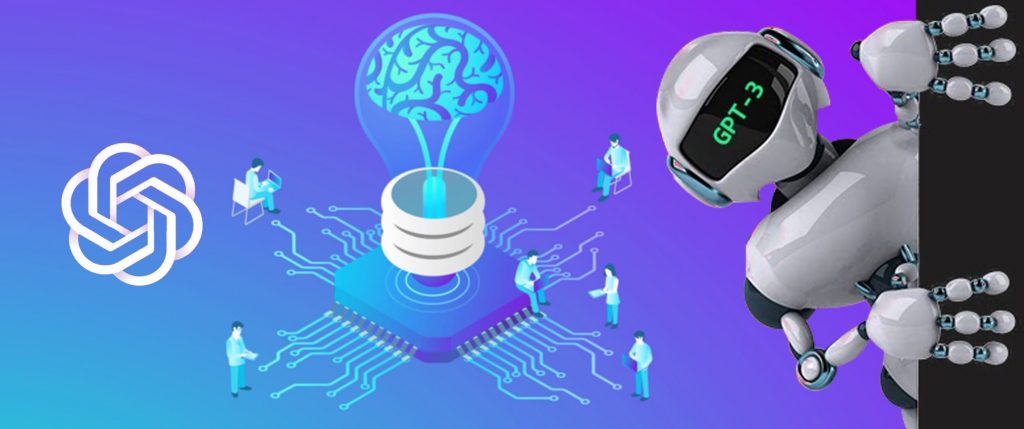
Introducing GPT-3
Generative Pre-trained Transformer 3 (GPT-3), the latest machine learning model from OpenAI. It can generate up to 120,000 words of text describing images using less than 1,000 words of input. After they saw how quickly GPT-2 could make natural-sounding words, researchers were even more excited. Collaborating with a professional AI development company can bring about significant digital transformation services.
Text generators are frequent occurrence nowadays because of digital transformation.
Companies like Microsoft and Google have created wonderful language. To an untrained eye, it appears to have been written by a human. But what if you want to construct a business chatbot or a fun game? The truth is that most people merely require simple generators that make excellent sounding text. With the introduction of Google’s GPT-3 , an open source TensorFlow model that will outperform any other similar system in terms of quality and quantity, one of the greatest options for producing this type of writing just got much better.
Origin of GPT-3
Let us now discuss GPT-3’s forerunners — GPT-1 and GPT-2. GPT-1 was fine-tuned because it is trained for a specific goal. This is done under supervision to attain “strong natural language understanding.” GPT-2 evolved from GPT-1. Although GPT-2 is an order of magnitude larger, they are essentially rather comparable. There is one other distinction between the two: GPT-2 is capable of multitasking.
GPT-3 – Revolutionizing Artificial Intelligence
GPT-3 is the world’s largest neural network, with 175 billion parameters. Because it learned from CommonCrawl, WebText, Wikipedia, and a book corpus, it outperformed modern models on numerous tasks in the few-shot setting. GPT-3 is a meta-learner because it can figure out what it should do by looking at examples of it. GPT-3 is unquestionably a game-changing achievement for natural language processing in particular, and artificial intelligence in general.
It is a cutting-edge system for learning new things through observation in the field of Artificial Intelligence. Many parts of our daily lives now use GPT-3, from the home to the office. The initial goal of GPT was to make a learning machine for solving complex problems in mathematics, such as calculating square roots or finding zeroes of polynomials without human guidance. Later on, other natural sciences fields adopted elements from GPT. Application of GPT’s computational models and its brain-like architecture could achieve higher efficiency in the study and development process of ML algorithms.
How it Works?
GPT-3 is capable of advanced creativity due to its context-based nature. A userputs in a request, and the language analyzes it and gives a probable output. The text predictor analyzes all of the text existing on the Internet, calculating the most statistically expected output. For example, it can write stories, technical documentation or blog articles by processing what was already written on the Internet.
A Few Concepts that Relate to GPT Model include:
- Transformers, a kind of neural networks
- Generative models
- Language models
- Semi-supervised learning
- Multi-task learning
- In-zero short learning
What Can GPT-3 Do?
- Assists in dialogue creation, writing essays, new articles, tweets
- Assisting in fiction, poetry, humor, online games, cooking recipes
- Coding Python, SQL, Javascript, CSS, HTML, React App
- Managing ads, email copies, copywriting, CV generation, team management
- Supporting rational skills such as uncertainty, logic, concept blending, forecasting
Impact of GPT-3 on the World
The GPT-3 algorithm opened the door to a new era of AI technologies, bringing significant improvements over previous approaches. Some researchers attributed human characteristics to the system, while others built companies using it. The algorithm generated a great deal of buzz in both industry and academia.
The artificial intelligence known as GPT-3 is remarkable; however, like any other powerful technology, it can be used for malicious purposes. Examples of these purposes include: biasing information, propagating false news, creating carbon footprints, generating misinformation, and causing job losses.
Will GPT-3 End Coding?
Recent studies with the language demonstrate how AI may facilitate developers’ job by providing custom code. GPT-3 can code in Python, CSS, and JSX. It will eventually be able to work with Java and .Net as well. This universal tool for programmers may change the whole industry, as it will create a much simpler interaction with software systems.
Conclusion
The excitement surrounding the artificial intelligence (AI) system known as OpenAI GPT-3 may be explained by its human-like responding and fast learning capabilities. Unlike other models such as BERT, which requires hundreds of examples and days of training to learn, the GPT-3 does not. You can ask it to perform a task and get the answer instantly. It is a considerable enhancement for data scientists that gets them excited like no other tool. Being one of the best AI development companies worldwide, Allianze InfoSoft can provide our clients with the best digital transformation services. For any further assistance or queries, kindly let us know at info@allianzeinfosoft.com
